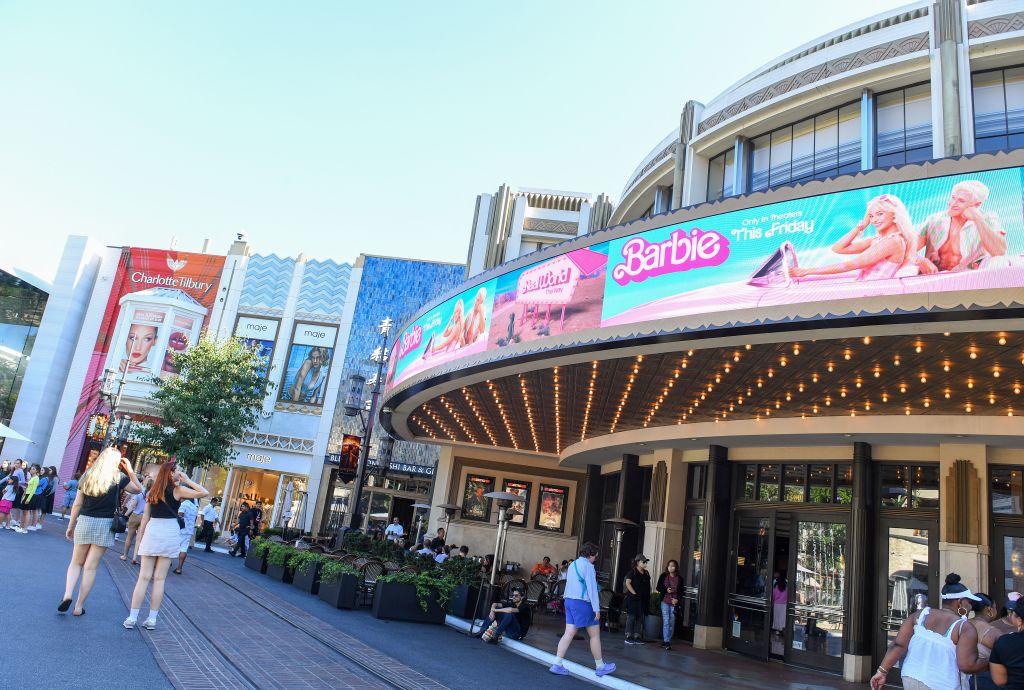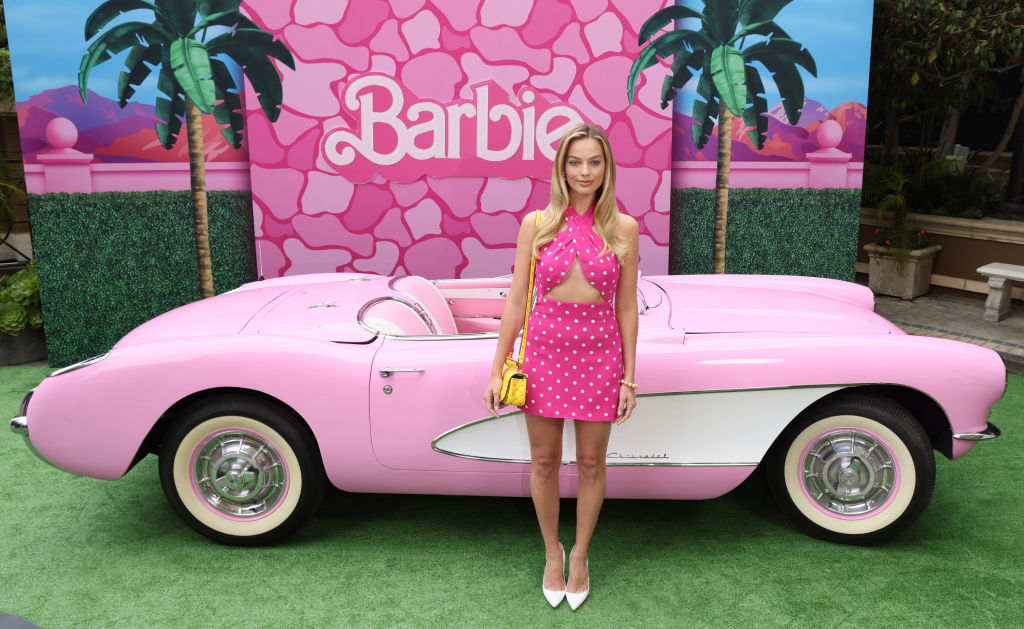
Unless you’ve been living in a nuclear bunker for the past year, it’s highly likely that you have some consciousness of the Barbie movie. With over 100 brand collaborations, a raft of self-perpetuating memes, and even an Airbnb, Warner Brothers’ marketing machine has managed to put pink into the population’s collective consciousness, creating anticipation for a cinematic event, unlike anything we’ve seen in recent years.
The timing of Barbie’s release (and that of its less hyped but also eagerly awaited opening weekend ‘rival’, Oppenheimer) comes at a fascinating inflexion point for the movie and TV industry. Writers and actors are on strike in the US, at odds with streamers and studios about the future of film. Meanwhile, cinemas, large and small, are struggling financially to stay afloat.
I still love going to the cinema, but truthfully I don’t go as often as I would like. Despite investing in a high-quality home cinema system and TV, when I do make it down to my local cinema, I’m inevitably reminded that it makes for a far more dynamic, powerful and immersive experience than at home. Well, usually.
As luck, or misfortune, would have it, on the opening day for Barbie, I unexpectedly found myself with a few hours free in the afternoon. Whether it was media manipulation or my own free will, at 3pm I found myself wearing pastels at a large chain multiplex, surrounded by a mostly Gen Z crowd resplendent in pink cowboy hats, sequins and feathers.
Their excitement was contagious and only boosted by the cinema’s endearing attempts at themed decorations and staff participation. The Barbie aesthetic is more accessible to dabble in than Oppenheimer, and as the crowds dispersed from the foyer to their respective screens, it was clear who had come to party. With the auditorium packed out, ripples of anticipation ping-ponged around the room like a Dolby Atmos demo disc. Unfortunately, that was about as immersive as the audio of Barbie got.
As the pink-tinted Warner Brothers logo spun onto a screen and the spontaneous applause died down, I immediately suspected something was off. Typically filmmakers use these opening moments of a film to bring the audience into the cinematic world with a blaring fanfare, rumbling sub-bass and swishy surround sound.
Instead, everything seemed eerily quiet and very rooted to the screen. In the film’s first scene, director Greta Gerwig knowingly pays tribute to The Dawn of Man from 2001: A Space Odyssey by Stanley Kubrick, but I was distracted by how small, non-monumental, and unimpactful it all seemed. To add to my confusion, I could clearly hear explosive sub-bass seeping in from another screen. I popped my ears to check I wasn’t still suffering from the effects of a niggling cold, but alas, it was not my sinus’ ruining the sound of the Barbie movie.
I am not the type of person who would usually get up and walk out of a cinema mid-film except in exceptional circumstances, so I patiently sat through a few more scenes, hoping that something would change.
Having read interviews with the likes of Mark Ronson, Dua Lipa and Billie Eilish lauding the film's soundtrack, I was eagerly awaiting the movie's musical moments. But when what should have been a fabulous, soaring disco number sounded weirdly narrow, compressed, and cramped, I could take it no longer and, trying not to disturb my fellow Barbie fans, headed to the foyer in search of answers.
“I think there’s something wrong with Barbie,” I said to one of the members of staff dressed as Ken. They replied with a “Huh?” smiling behind pink lensed sunglass. I elaborated: “There's no surround sound or sub-bass in screen one, and I don’t think that the biggest theatrical release of 2023 was mixed in stereo.”
Still grinning, they cocked their head quizzically. So I ventured further with possible explanations, “Perhaps all the amps aren’t on, or maybe they’re not configured correctly…”
“Oh, it’s probably just not in the right format,” they shrugged as if it wasn’t an unusual occurrence. I waited for Ken to suggest a possible remedy, but instead, they said that nothing could be done now; it would apparently be jarring to the audience to suddenly switch to multichannel playback. I was promptly offered a refund.
Unwilling to miss any more of the plot, I returned to the film. This was probably a mistake, as I found it impossible to get wrapped up in Barbie’s world, wishing I had waited until it was released for viewing at home instead. At least if I noticed an issue with my sound system, I could roll up my sleeves and rectify it.

Great cinema sound can give us shivers, make us jump, make our hairs stand up on end, disorientate and exhilarate us. Whether it’s dialogue, music or explosions, those sound waves produce a physical response in us that is responsible for a considerable amount of the emotional connection we feel to the characters on screen. Greta Gerwig and Noah Baumbach’s script is stirring and smart, and I do not doubt that the sound design and mix, overseen by Oscar nominee Ai-Ling Lee and Emmy award winner Dan Kenyon, is similarly impactful in both multichannel and Dolby Atmos formats.
In a post-pandemic, post-streaming world, we’re accustomed to filmmakers earnestly appealing to the public to support their latest works on the big screen and, they assure us, not for reasons of personal gain. Hundreds of skilled artists and technicians pour their efforts into the design, visuals and audio of blockbusters like this, and unless you’re lucky enough to have your own high-spec screening room, a cinema is likely the only venue where you can appreciate all this detail and depth as the creatives truly intended.
Unfortunately, the truth is that watching a film in the cinema doesn’t always guarantee the best viewing experience, and not just because you might get stuck behind someone who is scrolling on their phone the whole time. A lack of investment and patchy maintenance can mean that cinemas sometimes get things wrong, particularly regarding sound. Unwilling to interrupt the movie, audience members are also unlikely to question it when things seem off.
I’m not for one moment suggesting abandoning the cinema. For every bad experience, I’ve had dozens more that left me enraptured, captivated and thoroughly entertained. If anything, being forced to endure Barbie in stereo highlighted to me how vital good quality surround sound is to enjoying movies, whether you choose to watch them in a cinema or at home.
Of course, a soundbar, speaker package or headphones won’t deliver the same range and dynamics as a properly calibrated commercial system. But if you choose your products wisely, you can still create an immersive experience that won’t leave you feeling disconnected from the images on the screen.
Perhaps inevitably, after so much build-up and, of course, incorrect audio playback, I did find the Barbie movie somewhat underwhelming – though I will be reserving full judgment until a second screening.
Despite the lacklustre sound hampering its delivery, the film’s message was still palpable. When Billie Eilish’s masterful ballad What Was I Made For? finally appeared (after being sonically foreshadowed throughout the film), there were audible sniffles from all around me. I took a moment to appreciate that bit of community-created surround sound, then sought out a Ken for my refund.
MORE:
Why doesn't anyone make 4K Blu-ray players anymore?
How to set up your home cinema speaker system
The best Dolby Atmos movie scenes to test your home cinema system







